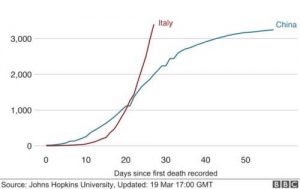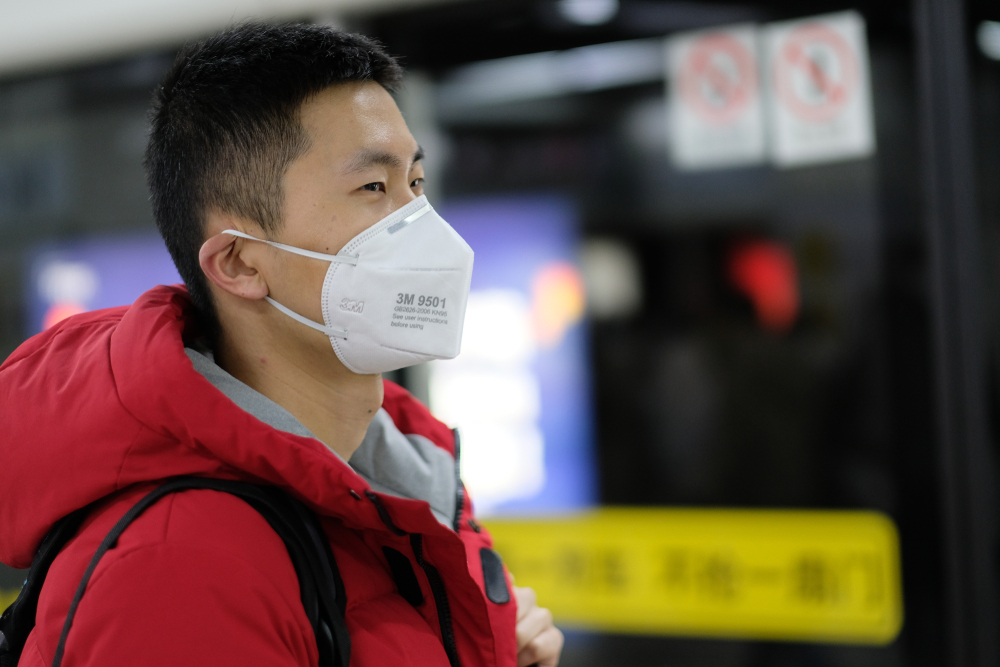Paul Evans
A report from the World Health Organisation and China Joint Mission on Coronavirus Disease provides the first scientific assessment of China’s aggressive approach towards controlling the spread of the virus.
A 25-strong team of scientists, including a dozen from around the world were given extensive access as the authorities fought to bring the epidemic under control.
Their report concluded that, “China has rolled out perhaps the most ambitious, agile, and aggressive disease containment effort in history.”
The report’s authors were in no doubt about the effectiveness of the strategy.
“China’s bold approach to contain the rapid spread of this new respiratory pathogen has changed the course of a rapidly escalating and deadly epidemic,” it says. “This decline in COVID-19 cases across China is real.”
Speaking before the World Health Organisation announced a pandemic, Dr Bruce Aylward the academic leading the project suggested that other countries could contain the virus if they learned from China’s approach.
Early intervention
Further research by a team at Beijing Normal University found that the Chinese cities that introduced control measures before their first case of COVID-19 subsequently had 37% fewer cases of the disease.
The study looked at the responses of the authorities in 296 Chinese cities. The most effective strategies included suspending intra-city public transport, closing entertainment venues and banning public gatherings.
The researchers concluded that by day 50 of the crisis (FEB 15) the national emergency response delayed the growth and limited the size of the COVID-19 epidemic preventing hundreds of thousands of cases across China.
UK changes strategy
In the last few days the British government has changed its tack on the virus after a mathematical model by Imperial College predicted that up to 250,000 people could die unless strict social distancing and home quarantine measures were taken.
The government has said all along the that more stringent steps were in its action plans, deploying them gradually, but a string of senior academics and politicians have publicly questioned the strategy, pointing to the success of early intervention in China and the extensive testing regime in South Korea, which has offered an alternative approach to lockdown.
South Korea has tested more than 270,000 people – 5200 tests per million inhabitants, more than any other country except tiny Bahrain, according to the Worldometer website.
What steps has China taken?
On 10 January 2020, the first death and 41 clinically confirmed infections caused by the coronavirus were reported.
By 22 January 2020, the virus had spread across China, with 571 confirmed cases and 17 deaths reported.
A day later Chinese leaders announced the decision to lock down, Wahun and nearby cities, banning all travel without permission, quarantining 50 million people.
By 3 February 2020, the Chinese government shut down all non-essential companies, including manufacturing plants, in Hubei Province.
The WHO report concluded that this “effectively prevented further exploitation of infected individuals to the rest of the country”. In other parts of China people voluntarily quarantined themselves.
Chinese adopted a three-phase strategy first preventing the spread of cases from the source and blocking transmission. Early media reports from Wuhan showed a situation which appeared out of control. Medical facilities were over run and struggling healthcare workers were themselves succumbing to the disease. Phase 2 quickly introduced more extreme restrictions and social distancing. And these were only lifted at the start of the third phase as the number of new cases consistently fell.
The scale of the Chinese public health effort was impressive. In Wuhan alone more than 1800 teams of epidemiologists, each with 5 people collectively traced tens of thousands of contacts each day, quickly putting people into isolation.
“To actually stop the virus, [China] had to do rapid testing of any suspect case, immediate isolation of anyone who was a confirmed or suspected case, and then quarantine the close contacts for 14 days so that they could figure out if any of them were infected,” Aylward told New Scientist

Mass gatherings were banned and shops and schools were closed. Anyone who went outside had to wear a mask.
Apps were used to allow the state to monitor the movement of infected people.
Zhejiang Province made extensive preparations in advance of their first reported case. But by 2 February 2020 they had implemented a seven-day lockdown in which only one person per household was allowed to exit once each two days.
A system of health QR codes was used by everyone in Hangzhou to track and stop the progress of the virus. Each individual was responsible for recording their temperature and updating their online profile.
After filling out the questionnaire, users receive a colour-based QR-code, on their mobile phones indicating their health status. Green code allowed free movement, yellow required seven day quarantine whereas red a 14 day self-quarantine.
Of course, overall the measures were strong, but the WHO team also found that the Chinese varied their approaches, decisions about what tactics should deployed and where, were based on a huge pool of new medical information that they collected.
invaluable data
The data compiled by Chinese scientists has been invaluable in informing other countries, providing a basic profile of the virus and how it impacts upon the population. They found that;
80% of infected people had mild to moderate disease,
13.8% had severe symptoms,
6.1% had life-threatening episodes of respiratory failure, septic shock, or organ failure.
The case fatality rate was highest for people over age 80 (21.9%), and people who had heart disease, diabetes, or hypertension.
Fever and dry cough were the most common symptoms.
Surprisingly, only 4.8% of infected people had runny noses.
Children made up a mere 2.4% of the cases, and almost none was severely ill.
For the mild and moderate cases, it took 2 weeks on average to recover.
Community cohesion
Of course, the measures were applied strongly by the Chinese authorities and in ways which other governments could not emulate. Despite the stringency of the sanctions the WHO report commented on the level of community spirit and cooperation.
“Everywhere you went, anyone you spoke to, there was a sense of responsibility and collective action, and there’s war footing to get things done,” Dr Aylward says
Now that restrictions are being lifted attention is shifting to the mental health damage done as a result of the confinement and the anxiety about loss of income and business collapse.
The Head of Psychology at Tsinghua University, Dr Peng Kaiping, has told ITV news that his institution has already had calls from people experiencing the severe depression and distress symptoms usually associated with PTSD.
As of 18 March new cases in China continue to fall compared to the accelerating crisis across Europe.
Dear Reader,
If you like our content please support our campaigning journalism to protect health care for all.
Our goal is to inform people, hold our politicians to account and help to build change through evidence based ideas.
Everyone should have access to comprehensive healthcare, but our NHS needs support. You can help us to continue to counter bad policy, battle neglect of the NHS and correct dangerous mis-infomation.
Supporters of the NHS are crucial in sustaining our health service and with your help we will be able to engage more people in securing its future.
Please donate to help support our campaigning NHS research and journalism.


